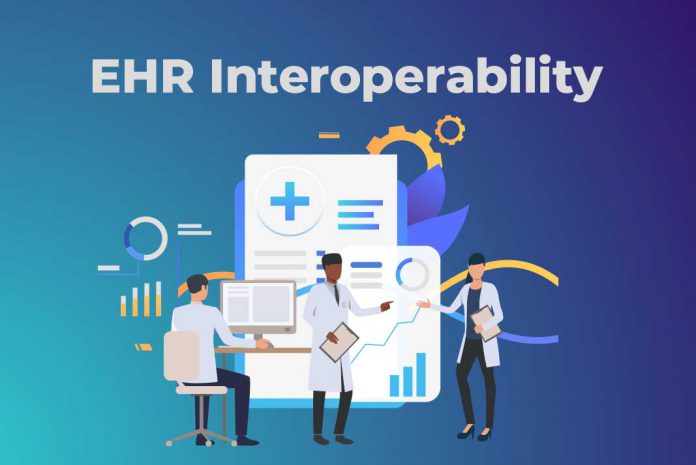Overview
Things used to be a little simpler in hospitals, patients had paper charts where doctors and nurses wrote notes. there weren’t quite as many systems collecting data on vitals and beeping about updates.
Fast forward to the present, healthcare has become much more complex and care is coordinated by diverse teams, a single patient may see an emergency physician, multiple specialists, a radiology tech a phlebotomist, and several nurses all in a matter of hours.
Not only does every patient care team member rely on the others to discuss treatment plans, but each also relies on the sharing of important information related to patient care. This includes events like admissions and discharges, new test results, and patient information contained in the electronic health record (EHR).
Interoperability Simplified
This is where interoperability comes in. According to doctor Lisa Tremblay, interoperability, is when multiple systems can share data that caregivers can use to inform patient care; this allows care teams to use the best tools to support their workflows regardless of the original source of data.
One of the main enablers in EHR interoperability is using integration standard protocols like HL7, and lately fast healthcare interoperability resources (FHIR), and application programming interface (API). These protocols would much help in getting the fruits in interoperability and facilitate the process of healthcare data exchange.
Advantage of EHR interoperability
Electronic health records (EHR) support interoperability by working with the vast amount of patient information in existing hospital systems, using healthcare standard protocols EHR system is able to add clinical context to a message that aids in more informed and efficient decision making.
Electronic health records (EHR) have a main objective which is to improve the care process flow for providers and patient and provide a better patient experience and streamlined workflow, the healthcare staff is utilizing EHR by having a timely access to patient records and alerts for better diagnosis and making informed decisions.
Interoperability for EHR systems really helps in creating an ecosystem for healthcare, building a home for the robust exchange of health data, so data can flow back and forth in the ecosystem, for sure that won’t happen at one time, but it would be a scalable process as more systems can integrate and more healthcare facilities can interoperate and exchange health data instead of keeping it in an isolated island.
If we are going to talk about EHR interoperability inside one healthcare facility, we would mention the consolidation of data for this facility in a single repository as EHR can and receive patient health information from other systems or send information even to other systems inside the hospital or sharing data with patients.
In the healthcare IT sector, we can find a lot of solutions and many innovations that help so overcome the daily challenges in the care process, these solutions include picture archiving and communication systems (PACS), radiology information systems (RIS), laboratory information systems (LIS), cardiology information systems (CIS), medical devices information platforms (MDIP), enterprise resource planning (ERP), and data analytics solutions.
All of these systems can generate much helpful information that needs to be centralized and exchange through a unified channel which is the EHR. It would be much better to consolidate all this data and make it transferable to other systems seamlessly instead of making data in isolated islands that make it underutilized.
One of the trending approaches worldwide is patient engagement, the ownership of health data is not exclusive for the healthcare providers only, but right now it’s the right of patients to own their health information, with EHR interoperability you can send health information to patients and communicate with them, even you can receive data from them which would be very beneficial to build a patient history if they have a past data, the patient history is really useful to provide a higher quality of care and personalized care.
Example for Interoperability with Radiology
Let’s take a look at a detailed example in radiology, in most hospitals today there’s often a disconnect between the ordering physician and the radiologist when it comes time to discuss the results with the electronic health record system (EHR). The radiologist dictates their findings and specify the urgency of the findings, with EHR interoperability, it can send the results securely to the ordering physician’s preferred device, and to other care team members if needed.
The notification includes a link to the PACS viewer with the images and full patient findings all delivered securely and quickly. The recipient can then acknowledge the message and that acknowledgement is written back to the patient’s record. interoperability between the PACS system and EHR means the ordering physician can receive and act on the results quickly with a secure, automated, and auditable workflow.
This test results scenario is just one example of countless possibilities, imagine the potential impact on care team efficiency and patient care, when all of these data sources can share information throughout the hospital.
Summary
If we want to summarize the advantage of the interoperability in EHR systems we would say it can do the following:
- Improving patient care and patient experience.
- Improving patient safety.
- The ability to share data with ease with any other system.
- Saving much time and effort for patients and healthcare staff.
- Achieving better productivity and reducing the cost of care.
- Making a nucleus to build big data in the healthcare facility

